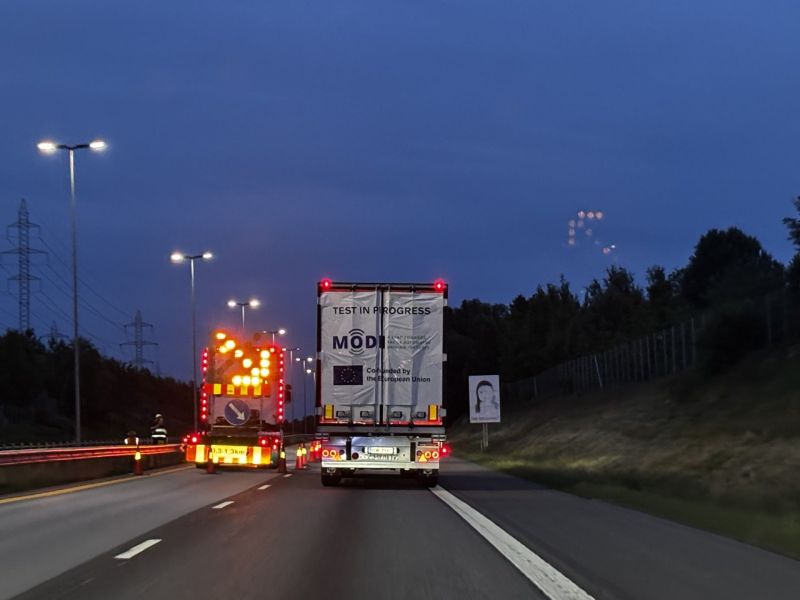The MODI project has launched its Norwegian operation in Moss, a key hub on the Rotterdam–Oslo freight corridor. Coordinated by ITS Norway, this use case is focused on deploying Level 4 autonomous trucks in real-world public road and terminal environments.
Objectives in Moss
Vehicular communication & environment sensing: Autonomous trucks in Moss are equipped with cameras, radar, sensors, and AI algorithms to interpret traffic scenes, detect hazards, and execute safe driving maneuvers, covering both confined terminal areas and public roads.
Barriers to deployment: The project tests infrastructure readiness, including road signage, digital mapping, V2X connectivity, and terminal access control. It also examines the technical, regulatory, and operational challenges specific to Norway.
Moss is one of five strategic use cases along the multi-national corridor (Rotterdam–Hamburg–Gothenburg–Oslo). Each demo site targets different logistics challenges—from port operations and hub-to-hub transitions to motorway driving and border procedures.
Notably, the Norwegian use case directly contributes to the public-road segment, focusing on vehicle-to-infrastructure communication and safe public integration.
Norwegian Use Case Highlights
Safer and more sustainable logistics
Autonomous Level 4 operation promises reduced human error, fewer accidents, and more efficient freight, thereby supporting EU goals such as Vision Zero and logistics decarbonization.
Addressing driver shortages
Europe is facing a severe shortage of heavy truck drivers. Autonomous fleets, monitored by remote operators, help alleviate this issue while maintaining high operational continuity.
Cross-border technical harmonization
With Norway outside the EU, the corridor crosses multiple jurisdictions. Data from the Moss tests feeds into recommendations for seamless regulatory frameworks and digital standards across national borders.
MODI’s Norwegian use case operation extends through March 2026, culminating in technical performance reports, socio-economic impact assessments, infrastructure adaptation guidelines, and sustainable business models for automated freight logistics.
Partners include the Statens vegvesen – Norwegian Public Roads Administration, ITS Norway, SINTEF, Østfold fylkeskommune, Q-Free, ASKO, Einride, Moss Havn, Trafikverket, Kartverket, and Volvo, working alongside international stakeholders to shape the future of sustainable, automated freight transport.

